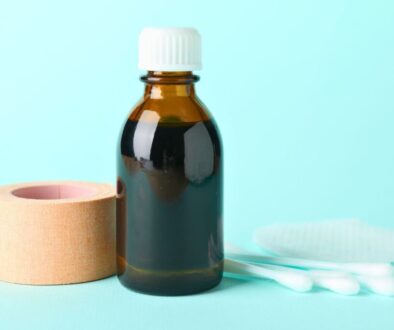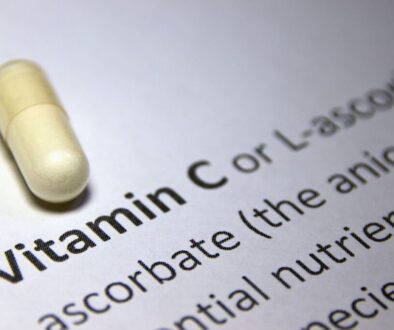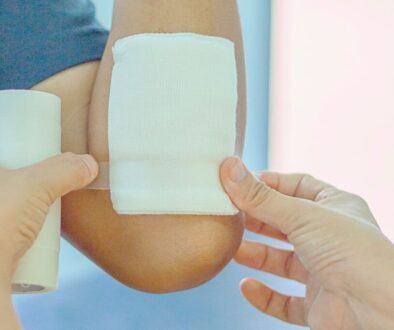Silver Nitrate For Wounds: Uses, Benefits, And Precautions
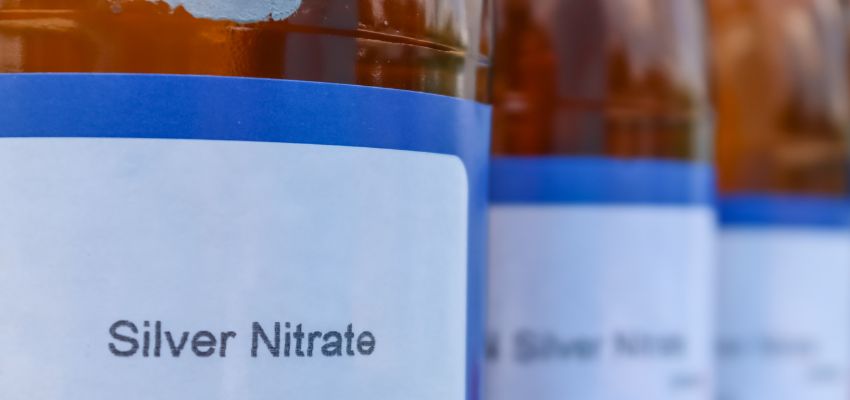
Safety Considerations And Precautions
Silver nitrate can be effective for wound care. However, it’s essential to use it carefully. Ideally, it should be used under the guidance of a healthcare professional. Here are some possible silver nitrate for wounds side effects:
- Skin staining. This substance may cause temporary skin darkening, resulting in a dark brown or black hue when exposed to sunlight.
- Eye protection. It’s crucial to shield your eyes from accidental exposure during application, as it can lead to irritation or injury.
- Toxicity risks. To prevent toxicity, avoid ingestion and limit excessive exposure. Symptoms may include nausea, vomiting, and abdominal discomfort.
- Tissue damage. Extended or excessive exposure to silver nitrate can cause chemical burns and irritate the surrounding healthy tissue.
- Allergic reactions. Some may have allergic reactions to silver nitrate, triggering skin irritation, rashes, or itching. It’s best to do a patch test before using silver nitrate.
- Handling and storage. This material requires careful handling. Store it in a cool, dry area, away from exposure to direct sunlight and incompatible substances.
Silver Nitrate For Wound Treatment
Silver nitrate is available for wound care in two primary forms: powder and stick applicators.
- Powder. This form is ideal for treating more extensive, irregular wounds due to its broad application capabilities. Silver nitrate powder for wounds can be applied straight to the wound bed or used to infuse dressings for topical application. The powder is finely ground into crystalline form and packaged in small vials or containers.
- Sticks. These are designed for targeted treatment of smaller areas. Available as applicator sticks or pencils, silver nitrate in this form is combined with a chemical adhesive. The sticks are conveniently packaged as single-use applicators, perfect for on-the-go wound care.
Notably, silver nitrate has antimicrobial properties that are advantageous for wound management. It releases silver ions that are toxic to bacteria, effectively reducing the risk of infection and promoting tissue regeneration.
How Long Does It Take To Heal After Silver Nitrate?
The healing process after using silver nitrate for wound care can vary greatly. Factors like the type and severity of the wound and the person’s health play a role. This treatment helps promote healing. It reduces the risk of infection and inflammation, leading to a quicker recovery.
- Initial stage. After applying silver nitrate, the wound may show signs of inflammation or irritation. This is normal during the healing process. Silver nitrate kills bacteria and microorganisms, preventing infection and promoting tissue regeneration.
- Reduction of infection. In the coming days or weeks, silver nitrate’s antimicrobial properties will aid the body’s healing. It effectively supports the natural healing process.
- Tissue regeneration. As infection and inflammation decrease, the wound heals from the inside out. New tissue fills the wound bed, and the edges gradually come together to seal it.
Factors Affecting Healing Time
Several factors influence the healing time following treatment with silver nitrate for wounds:
- Wound size and depth. More extensive wounds typically require more time to heal.
- Health conditions. Conditions like diabetes, vascular disease, and weakened immune function can slow down healing and interfere with the body’s ability to recover.
- Wound location. Wounds in areas with reduced blood flow or limited mobility tend to take longer to heal.
- Adherence to care instructions. Strictly following post-treatment care is crucial. This includes keeping wounds clean and dry. Regularly changing dressings, especially when using silver nitrate pads for wounds also plays a significant role. These practices impact healing time.
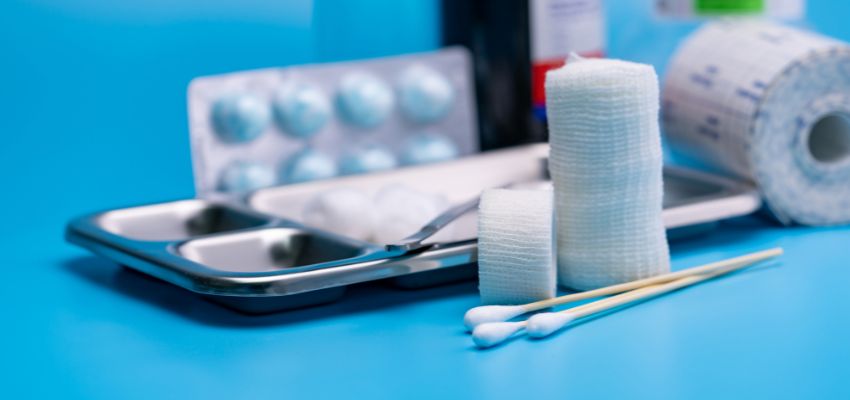
Elevating Wound Care With Silver Nitrate
Silver nitrate for wounds, available in powder and stick forms, is crucial. It’s effective in promoting healing and preventing infections. However, it requires careful application to manage potential side effects. Understanding its uses and safety considerations can improve patient outcomes. Knowing the differences between forms can also enhance satisfaction in wound management. Consider incorporating silver nitrate into your wound care practices for optimal results.
Heal Ulcers, Burns, & Surgery Wounds With Break-Through Amniotic Allograft Treatments
Experience the future of wound care with our advanced amniotic allograft treatments. Say goodbye to slow healing. Our innovative solutions promote faster recovery from pressure wounds, ulcers, burns, and surgical wounds. Trust the power of science for your healing journey. Regain your comfort and health today! See if you are eligible for treatment here.

About The Author
Corinne Grace is a full-time writer living in the Philippines. She has a nursing degree from Riverside College. Her background in nursing informs her perspective, allowing her to weave in themes of health, empathy, and resilience into her work.

